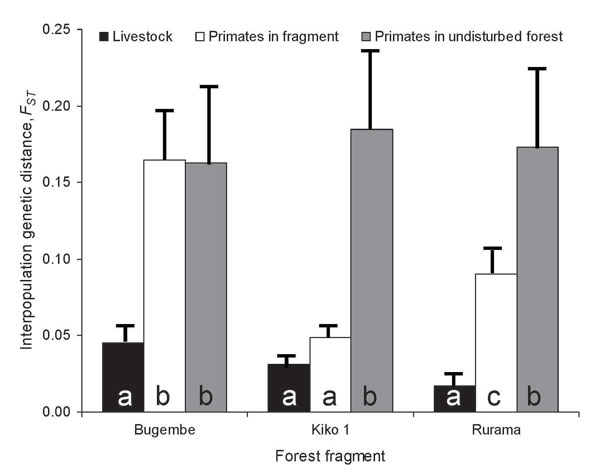Volume 14, Number 9—September 2008
Research
Forest Fragmentation as Cause of Bacterial Transmission among Nonhuman Primates, Humans, and Livestock, Uganda
Figure 4

Figure 4. Interpopulation FST values between Escherichia coli from 3 species of primates in 3 forest fragments near Kibale National Park, Uganda, and E. coli from both humans and livestock living in villages associated with the fragments. BWC, black-and-white colobus; RC, red colobus; RT, red-tailed guenon. Error bars represent standard errors of the mean, estimated from bootstrap analyses with 1,000 replicates. Different letters within bars indicate statistically significant differences in FST values (exact probabilities <0.05).
Page created: July 13, 2010
Page updated: July 13, 2010
Page reviewed: July 13, 2010
The conclusions, findings, and opinions expressed by authors contributing to this journal do not necessarily reflect the official position of the U.S. Department of Health and Human Services, the Public Health Service, the Centers for Disease Control and Prevention, or the authors' affiliated institutions. Use of trade names is for identification only and does not imply endorsement by any of the groups named above.